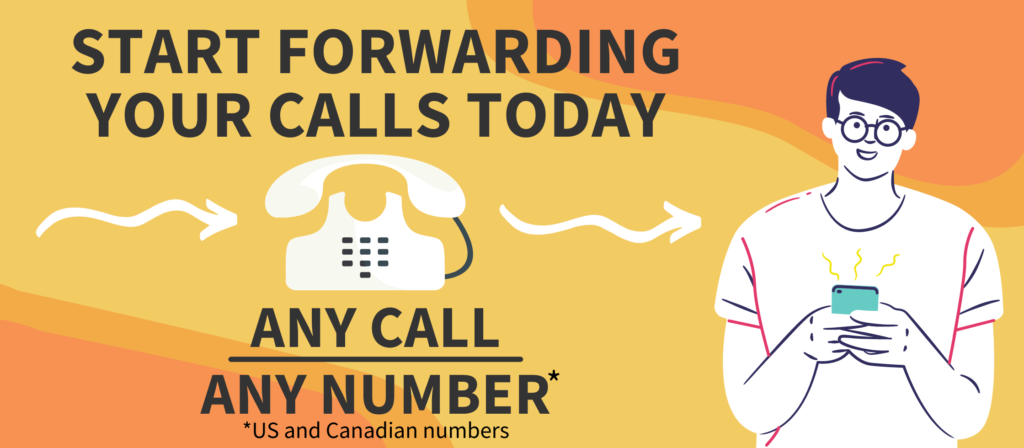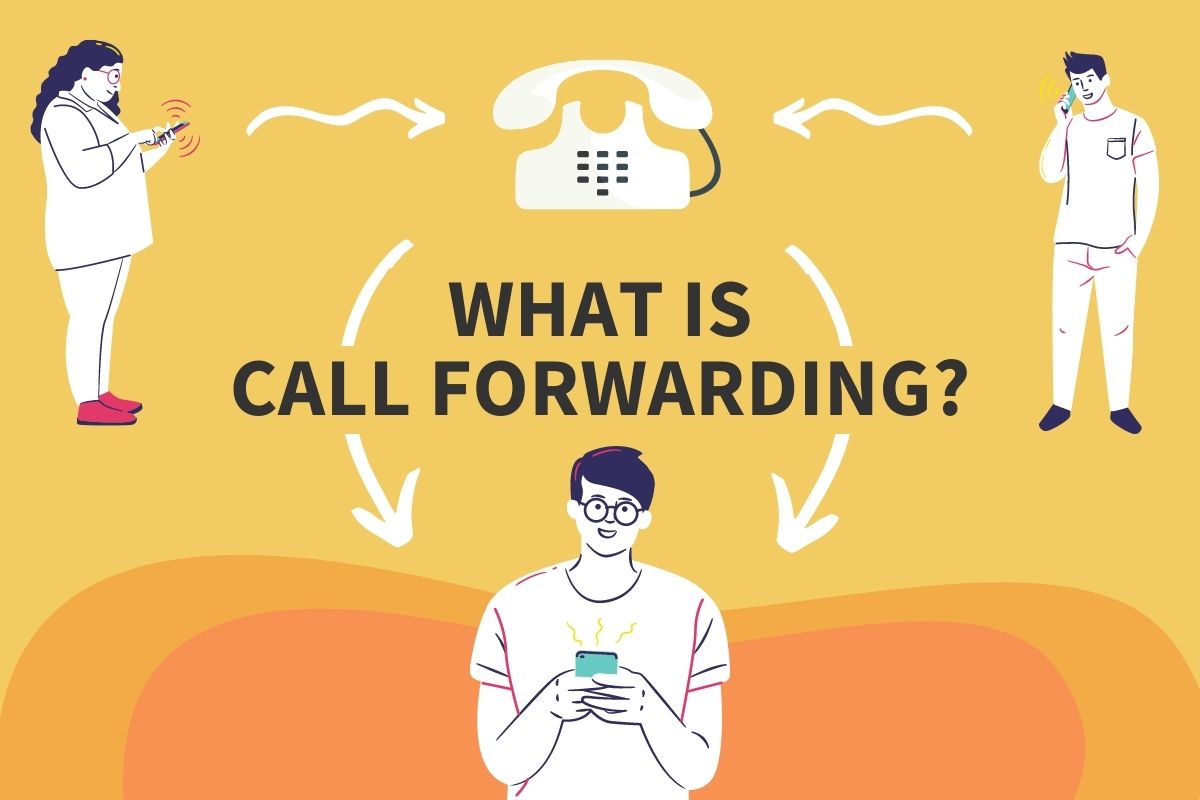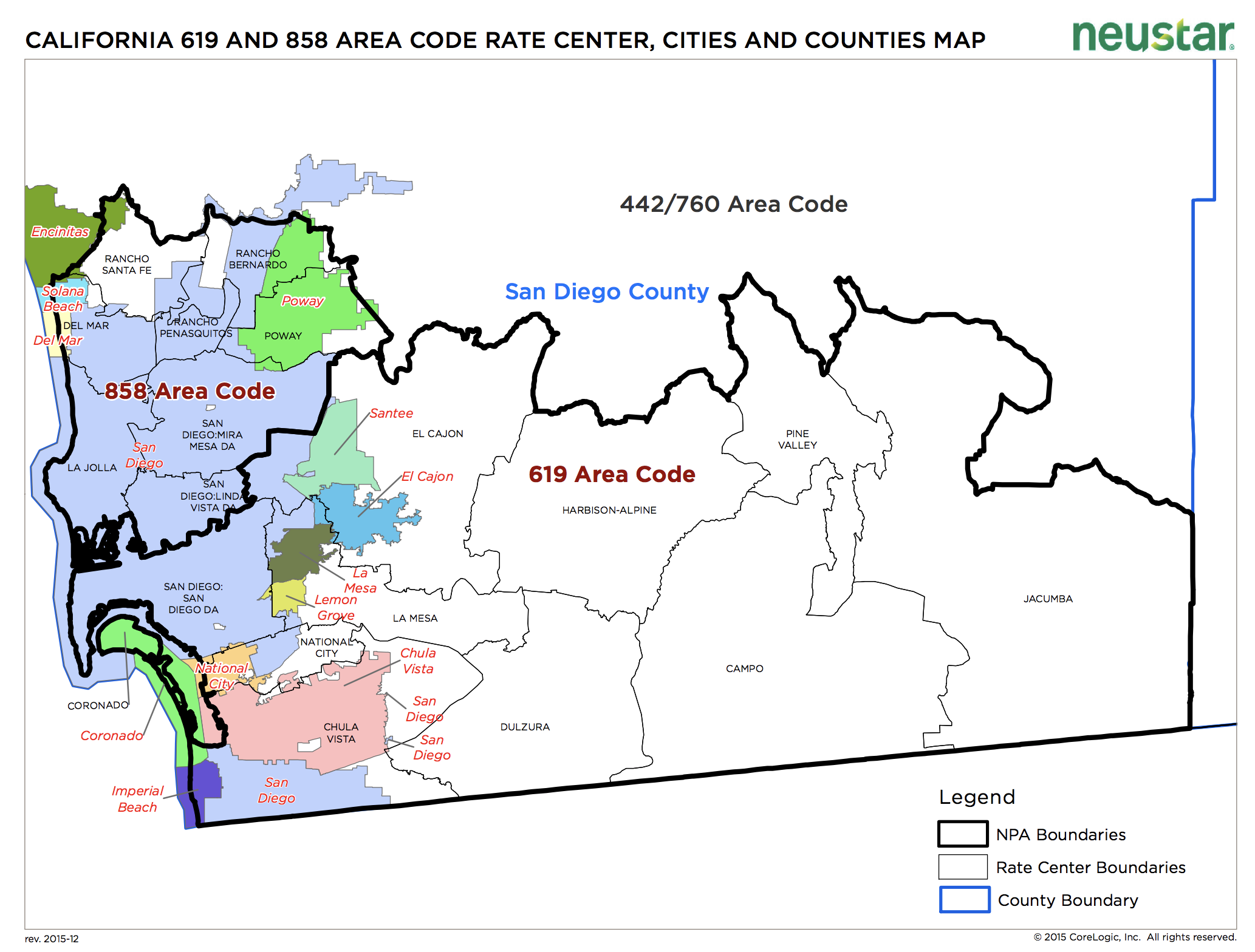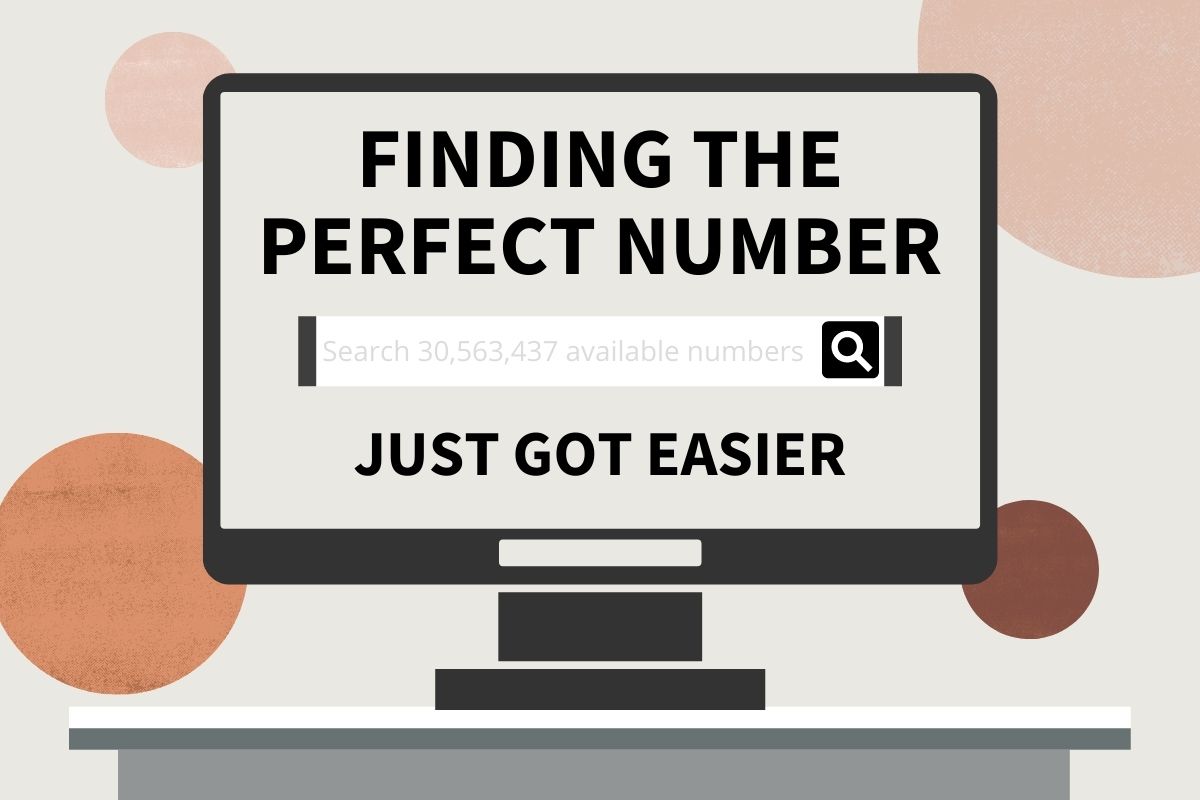Chances are if you’re reading this, you have a few questions about call forwarding.
What is it? Why is it important? How do I use it?
Maybe you purchased a phone number, or you’re planning to, and you’re not quite sure what to do with that number yet.
Perhaps you started your very own business (congratulations if so!) and you’re debating whether to put your personal phone number out there.
Or it’s possible that you’re moving out of state, but need to keep your landline to stay in touch with everyone. (And yes, landlines are still a thing.)
Whatever your situation is, we get it and we want to help you figure out the best solution. In this post, we’ll give you a rundown of call forwarding, including how to call forward and why it’s so important.
What is Call Forwarding (and Why Does it Matter)?
Call forwarding is sending calls (or “forwarding” calls) from one telephone number to another number or group of numbers.
For example, when someone dials (833) TWO-PIGS, the call is forwarded to your cell phone without the caller knowing. Then when you answer your cell phone you’ll be automatically connected to the caller. That’s call forwarding.
Now that you have a simple understanding of how call forwarding works, let’s explain why it matters.
Before NumberBarn, I made outbound sales calls to general contractors. We’re talking anywhere from 60 to 100 calls a day all from my personal phone number. As fun as that was (notice the sarcasm), I’m wishing the contractors didn’t have access to my personal number of 20 years.
If only my former employer would’ve known about call forwarding. They wouldn’t have exposed me to harassing calls nor needed to buy me a new mobile device.
Now in case you’re wondering, that isn’t the only way to utilize call forwarding. There are many many ways and we’ll get to them in a bit. Before we do, there are a few terms I’m going to mention and it’d be best if I inform you of them real quick.
Call Forwarding Lingo You Need to Know
With call forwarding already being complicated, I don’t want to confuse you with insider jargon you may not be familiar with.
We may discuss things like “rate centers” or “hunt groups” throughout this article. And we would understand if you didn’t know what those terms mean.
So in hopes of avoiding potential confusion, here are a few terms we use in the VoIP industry (oh look, one of the terms!) when talking about call forwarding:
VoIP
This may be one you’ve heard before or are quite familiar with. Voice over Internet Protocol (VoIP) refers to the ability to make and receive phone calls using a broadband internet connection as opposed to cellular or traditional Public Switched Telephone Network (PSTN).
The reason we say you may be familiar with VoIP is because you more than likely have used VoIP services before. For example, Skype, WhatsApp and Facebook Messenger all use VoIP. When making calls on these apps, you’re using either broadband internet or a cellular data connection as opposed to calling through your cellular phone connection service.
Transfer
While we won’t use the word “transfer” to explain call forwarding, we still find it necessary to mention the term. There’s a difference between “transferring” and “forwarding” though some people use them interchangeably. The word “transfer” can mean a number of different things.
To name a couple, one might refer to a forwarded call as a transfer from one number to another. To add to that, the party that answers the forwarded call may be able to transfer the call to another number.
Does that make sense? Did we make it more confusing for you? Exactly. That’s why we’re going to stay away from the word “transfer” and stick with “forward”.
Hunt Groups
Put simply, a hunt group is where a single number forwards calls to multiple numbers.
You might also hear of this referred to as “simultaneous ringing.” The first person to answer the phone gets the call and ringing stops for the other numbers.
One common challenge with hunt groups occurs when voicemail answers on one of the phones. To solve this problem, providers let call recipients press a digit to answer the call, ensuring the call doesn’t go to voicemail.
Queues
Similar to hunt groups, queues allow calls to a single number to forward to a series of numbers. The difference is that queues ring one number at a time for a preset duration before moving on to the next number.
They are often configured to ring in a round-robin format so calls are evenly distributed across the group, but they can also be set to ring hierarchically.
Depending on the size of your business or call center, queueing can vary in complexity. For the more complex settings, contact centers use an automatic call distributor (ACD), which uses advanced logic to route calls.
Rate Center
A rate center refers to the geographical area that determines whether a call is local or long distance. So then what is it that makes a call local or long distance?
A call from one user to another within the geographical area (rate center) is considered local, whereas a call from a user in one area to a user in another area is a long distance call.
Imagine you call your neighbor, whose landline telephone number is in the same rate center as you. You wouldn’t be charged long distance for that call. But if you call someone in another rate center, there would be a long distance surcharge.
Note: certain area codes may have more than one rate center, especially when covering a large geographic area. If that’s your case, you may be charged long distance for calls within the same area code.
However, These rules don’t always apply to VoIP and mobile carriers (that is assuming you’re in the same country). Rate centers may still come into play when attempting to port a number to any variety of carriers.
Local & Toll-Free Numbers
The concept of local and toll-free numbers is likely familiar to most, but has also lost some of its meaning with the advent of VoIP and mobile phone service. Traditionally, local numbers are not charged for calls to numbers within their same rate center, but they are charged long distance for calls outside of that rate center.
Toll free numbers (like 800, 888, 877, etc.) were generally adopted by businesses who wanted to pick up the long distance tab for their callers.
When it comes to explaining call forwarding, these are the main terms that you should be aware of. If there are other words you don’t recognize throughout your reading, this post covers all the other jargon we use, not limited to forwarding. Once you’re done with that quick read, you can head back over here!
5 Examples of Call Forwarding
Now that we’ve defined the more complex terms for call forwarding and explained precisely what it is, let’s apply that newfound knowledge to your current situation.
There are plenty of examples of why someone would need call forwarding. For you and your boredom’s sake, we’re going to keep it to the main ways we and our customers recommend.
Small Business Owners and Entrepreneurs
You started your very own business. Maybe it’s your first or even your tenth. Regardless, you’re excited to get your business up and running, but first, you have some calls to make.
Whether you’re calling investors or potential clients, you’re not thrilled to be making so many calls on your personal phone. After all, this is the phone you’ve had from the start. You have all your family and friends in your contacts and don’t want your business matters jumbled into the mix.
On the other side, you also don’t want to purchase a second device for making calls. Yes, it would be a business expense, but the money could be better spent elsewhere. And who wants to carry two mobile devices everywhere they go?
So this is what it’s come down to? A new phone or using your personal number?
Actually, there’s another option for this hypothetical example. (Unless this accurately describes your current situation, in which case I’m sure we’re pretty spot on.)
With call forwarding, the only thing you have to do is purchase a new phone number and pay a small monthly fee. Once that’s done, you can forward calls from your new number to your personal number.
That way, you can still make all your calls from one phone while keeping your business and personal lives separate.
As a plus, when you receive a call, your phone will tell you which number was dialed so you can answer appropriately. Again, helping you to not mix up your business and personal life.
Marketing Professionals
Okay, so you don’t own a business, but you’re leading your company’s next marketing campaign. To make the most of it, you need access to certain metrics. Metrics that will show you exactly how each customer heard about you and got your company’s phone number.
Now that’s a daunting task. What are you supposed to do? Have your sales reps straight up ask each customer where they got your number from?
You could, but you don’t have to.
To make call forwarding work for your campaign, all you have to do is buy as many phone numbers as you need. Then, you post each number wherever you currently advertise.
You can use one number for your website, one to include in emails, and different numbers for social media ads. The list goes on. Basically everywhere you advertise or wish to publicize your phone number.
Once your campaign is over, you have access to how many calls each number received. These metrics can help you determine where to focus your efforts for your next campaign.
That’s not the only example of how marketers can take advantage of call forwarding. There are many options, but you get the idea.
We’ll let your imagination run wild with other ways to use call forwarding for your next campaign.
Working From Anywhere
There’s a chance you’re like us and you enjoy the freedom of working from anywhere — whether it’s from the slopes of Aspen, Colorado or from a beach in Hawaii. Or perhaps current events leave you no choice but to work from your home.
Maybe you’re not required to work at one specific location and enjoy having the option to work at home or in an office.
That’s the beauty of call forwarding: it gives you those options. It truly doesn’t matter where you work from as long as you have a telephone number that calls can be forwarded to. Regardless of where you work, your business never skips a beat.
Moving
When it comes to moving, you actually have quite a few options of what to do with your landline number. For now, we’re going to talk about one of the main options which involves call forwarding.
You purchased a new house and it’s not exactly right across the street. You may be moving to a new city, county, state or even a new country*. That also means it’s likely the service provider for that area is ALSO new. That’s a lot of new.
So does that also mean you need a NEW landline number? Yes… well, maybe, maybe not.
Why is this so complicated? Two words: rate center.
When moving to a new location, it’s not uncommon for your new provider to not allow you to keep your landline number. Even if you cry and tell them it’s the only one you’ve had your whole life. That’s because the rate center for that area may not support that number.
So the first thing you should do is ASK your new service provider if you can use the same landline number. Many providers have a spot on their website to see whether or not they can support your number.
What you do next depends on if you got a “yes” or a “no” from them.
“Yes, you can use the same number”
Hooray! This is going to be easy for you.
From here, you can port your number over to them and you don’t need to use call forwarding. (If that’s the case, then we’re sorry you came this far only to find out you don’t need call forwarding…)
If they don’t support the rate center, then please refer to this next section.
“No, you can’t use the same number. Sorry, not sorry.”
If you have no choice but to comply and use the number they choose for you, that’s okay. Don’t lose hope. There’s a simple and inexpensive alternative.
You can port your number to NumberBarn and use one of our Call Forwarding plans. Your number will still be active so that when anyone calls that number, you will receive it on your new landline.
Moving Internationally
I know what you’re wondering.
“How is moving internationally any different than just moving?”
That’s a fair question. To be honest, there isn’t much that’s different… At least when it comes to the process.
In case you didn’t notice, when we mentioned moving to a new country earlier, there was a little *asterisk. That’s not because the process is different. It’s because there’s an added perk when forwarding calls to an international number (and the possibility of an extra fee).
What’s the perk? Well, the perk is that you can keep your United States or Canada number. That’s right. Everyone back home can reach you with your same number and avoid international rates.
You just forward your now old number to your new, eligible international landline and… well… that’s it.

“But wait, what about that extra fee you mentioned?”
Thanks for asking. You can check out our International Rates page for more (precise) information on this. And don’t be surprised if your number is in one of the few countries (about 40+ right now) where calls to landline numbers only use plan minutes at no additional charge.
As for calls to mobile numbers, the rates vary depending on the country you’re moving to. There are also some countries that don’t support calls to either landline or mobile numbers. So please double check our International Rates page before making any final decision.
How to Call Forward
Ah, finally. The moment we’ve been waiting for. You have a clearer understanding of what call forwarding is. You’re aware of why you’d need to use it… but there’s still one piece of information missing.
HOW do you actually apply all this knowledge and set up call forwarding!? Well, the experience might look different depending on the carrier you work with, but we can tell you a handful of different methods to forward calls at NumberBarn.
Forward calls to a number
This one is probably the most common option, as well as the most straight-forward. If you want to forward all calls to a mobile or landline telephone number, the process is simple.
- First, sign up for our Forward plan
- Or, if you’re already signed up, log in to your account
- Click Numbers and then click on the number you wish to forward
- Click the Calls tab
- You will see a dropdown box where you can select to send all calls to a Forward
- Enter the number you want to forward calls to and select whether you want callerID to show the number of the person calling you or the number they dialed
Be sure to save your changes at the bottom of the screen and you’re all done. Yes, it’s that simple. Calls should begin forwarding right away.
Very friendly reminder: if you’re forwarding calls to an international number, the steps above are the same… Only after you CHECK THE RATES! Thank you.
Forward calls to voicemail
This option is pretty cool. Let’s say you own a law firm but you’re going on a three-week vacation (which you’ve more than likely earned). You have the option to forward work calls straight to voicemail. That way work calls won’t interrupt your relaxation.
If you want callers to leave you a voicemail, follow the process above up until step 4. For step 5, select Voicemail from the dropdown menu. All callers will be routed directly to voicemail at this point.
After saving your changes, head over to the Messages tab to configure your voicemail greeting and add an email address to send voicemail messages to. Again, be sure to Save Changes.
Also, since the voicemails get sent to your email, you can still check them whenever you can and call back any urgent calls.
Forward calls to an auto attendant menu
Have you ever called a telephone number and an automated voice asked you to press 1 for sales, 2 for support, and so on? That’s an auto attendant menu that you’re interacting with.
As it pertains to call forwarding, you can program the various menu options to forward to different numbers. For example, imagine creating a menu for your family landline number. Each digit on the phone keypad would route to the mobile phone number of the members of your household.
The same idea can be applied to businesses with many departments or law firms with many lawyers.
Forwarding calls to an auto attendant menu is slightly different from the above. First, follow steps 1-4. Then, select Menu. Now, let’s talk about how to configure your menu. Press the Edit Menu button to get started.
- You’ll want to set up a greeting to play when people call the number. You can click Change to either upload a recording or record the greeting from your phone.
- Then, you can program the options on the phone keypad from 0 through 9. You can also specify what happens on an invalid keypress or when no key is pressed at all.
- For each option, you can forward calls to a telephone number, forward to voicemail, or repeat the menu greeting.
Be sure to click Save Menu at the bottom of the screen to save your changes.
Forward calls to multiple users
If you’re looking to forward calls to multiple telephone numbers, we offer this service through NumberGarage.
The concept is simple. Each user can forward calls to a landline or mobile telephone number. When people call your NumberGarage number, calls can be forwarded to a user. Forwarding calls to multiple numbers entails adding multiple users that forward to different telephone numbers. Think of these like separate extensions for your small business employees.
As you can now see, setting up call forwarding is very simple and very much worth it.
Now before you get too excited, don’t immediately leave this post to set up your plan. First, let’s go over some perks we may not have mentioned and a couple reminders that we definitely have mentioned.

Extra Perks and Some Reminders
Before coming up with this section, we wrote a “Pros and Cons” section. That was until we realized that there aren’t any cons to call forwarding.
That said, that doesn’t mean it’s impossible for you to get any headaches throughout your process.
Instead of drawing out the “pros and cons” for you, think of this section more as a “pros and reminders” list. We’ll discuss the perks of call forwarding we haven’t covered yet (the “pros”). Then, we’ll remind you of important points to ensure you don’t get any headaches (“cons” if you don’t listen).
The Perks to Call Forwarding
Offer customers a toll-free option
For you business owners, an added bonus is that you can offer customers a toll-free option.
When browsing our extensive collection of telephone numbers, choose from the available toll-free numbers, as opposed to the local numbers. What that means is that the callers won’t be charged for calling you, but you’ll still receive that call on your local number/personal mobile device.
Keep important numbers
Whatever your situation is, you’ll have the option of keeping an important number that a certain carrier may not support (because of the rate center… stinkin’ rate centers).
That’s the beauty of call forwarding: it gives you options.
And why wouldn’t you keep that number for only a few bucks a month?
Keep it simple
No matter your profession, call forwarding is a very simple solution. Call forwarding isn’t exclusive to business owners and marketers. The same benefits are also available to professionals like lawyers, doctors, realtors, etc.
It’s a simple way to manage every call you get every day, whether they’re personal or professional calls.
Maintain much-needed anonymity
This goes without saying, but it’s pretty cool when we do say it. With call forwarding, your actual number is masked when making or receiving calls. You don’t need to publicize your personal number and mix up your professional and personal lives.
That’s an important perk to note. Sure, there may be cases where it makes sense to mask your number so it shows as “Unknown” to stay anonymous. But for calls that may require someone to call back, it’s best to have a number showing that also won’t compromise your personal privacy.
Send and receive SMS
We’ve talked a lot about sending and receiving calls in this post, but that doesn’t mean only calls can be forwarded.
With our call forwarding plan, SMS (texts messages) is included. Yes, you can also receive texts that are sent to the number you’re forwarding.
However, you won’t see them in the native messaging app you typically use when texting on your smartphone. You can send and receive SMS both via our online control panel and using our mobile application. You’ll also receive notifications of new texts via email. Simply enable email notifications in your account settings.
Blocking unwanted callers
Another cool feature included in our call forwarding plan is the ability to block any number you don’t want calling or texting you.
That said, blocking calls through your NumberBarn account doesn’t block the unwanted calls on the number you’re forwarding to. So if you find it necessary, block the number on both your account and your phone.
Important Reminders
Paying for two carriers
The only downside we could come up with is there’s the potential to pay for minutes with two carriers. While it can be a downside, it isn’t always a concern unless you have a high volume of calls from one or both carriers.
Most of the time though, the benefit and convenience outweigh the cost. Just remember that calling minutes carry a cost. Having an idea of anticipated call volume will help you find a plan to best fit your budget.
Ask First
Depending on your situation, call forwarding isn’t always the best option. There may be instances where porting your number is preferable. That being said, forwarding is a great option if you can’t port your number.
Be sure to always ask your provider if they can accept the number you wish to port before starting that process. If the answer is no, then forward away!
Call Forwarding Expert
Congratulations. You are now a call forwarding expert. Go ahead and high-five yourself!

Since you’re now an expert, you should know exactly what call forwarding is, how versatile it is and why it’s such an important tool.
And yes, we understand that all this information may be overwhelming at first glance. It’s okay if you need to take a minute to digest it all. Once you have, you can move on to making the best decision for yourself.
If you’re not sure call forwarding is the answer to your problem, consider porting or parking as potential solutions. If you decide that call forwarding is the best option for you, then great, we did our jobs.
Since you made it this far, you may as well get a head start on seeking out a call forwarding plan that’s just right for you. Head over to our website to look at the different plans we have to offer and what’s included in each of them. And if you have any questions along the way, check out our help center or reach out to our amazing customer support team.
Last, but not least, we want you to know that we at NumberBarn are here to help you and support your number needs. Thank you for choosing to be Number Smart.



